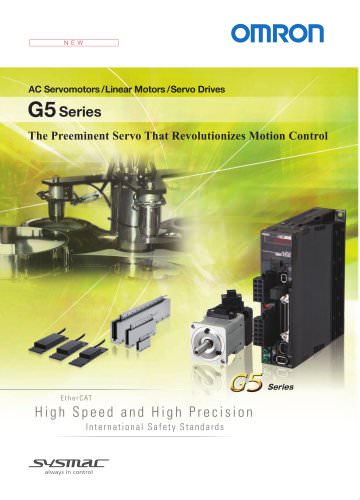
カタログの抜粋
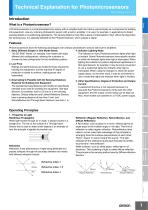
Technical Explanation for Photomicrosensors CSM_Photomicro_TG_E_4_2 Introduction Sensors A Photomicrosensor is a small photoelectronic sensor with an amplifier built into it that is used primarily as a component for building into equipment. Like any ordinary photoelectric sensor with a built-in amplifier, it is used, for example, in applications to detect passing objects or in positioning applications. The sensing object is most often a piece of metal called a "dog". When the dog enters the sensing area, it is optically detected by the Photomicrosensor, which outputs a signal. 5. Other Specifications: Degree of Protection and Output Current A waterproof structure is not required because it is assumed the Photomicrosensors will be built into other equipment, and the output current rating can be kept low. Also, most models can operate on a 5-VDC power supply. Control Components Automation Systems 3. Downsizing Is Possible with the Sensing Distances Required for Building into Equipment The standard sensing distances (slot width) are specifically intended to be used for building into equipment. Slot-type Sensors, for example, have a 3.6 mm or 5 mm sensing distance. Diffuse-reflective and Limited Reflective Sensors have a sensing distance of less than 5 mm, and Retroreflective and Through-beam Sensors, less than 1 m. Safety Components Photomicrosensors have the following advantages over ordinary photoelectric sensors with built-in amplifiers 4. Indicator Lighting Mode 1. Many Different Shapes in One Model Series The indicator on many Photomicrosensors lights when light The EE-SX67 Series, for example, has models with eight is incident. Some Photomicrosensors have specific models different slot configurations, allowing the customer to on which the indicator lights when light is interrupted. When choose the best configuration for the installation position. lighting the indicator for position adjustment applications of 2. Low Price Slot-type Sensors, for example, it may be more convenient Ratings and performances are limited to those required for to use a model that lights the indicator when light is building into equipment, and the required IP degree of interrupted. When using the indicator to check the power protection is easier to achieve, making prices very supply status, on the other hand, it may be convenient to reasonable. use a model that lights the indicator when light is incident. Operating Principles Refractive index: 1 Refractive index: 1.5 (Mirror) Regular Reflection (Mirror) Retroreflection (Paper) Others Power Supplies / In Addition Energy Conservation Support / Environment Measure Equipment Refraction Refraction is the phenomenon of light being deflected as it passes obliquely through the boundary between two media with different refractive indices. Reflection (Regular Reflection, Retroreflection, and Diffuse Reflection) A flat surface, such as glass or a mirror, reflects light at an angle equal to the incident angle of the light. This kind of reflection is called regular reflection. Retroreflectors (also called a corner cube) take advantage of this principle by arranging three flat surfaces perpendicular to each other. "Retro" means "to return toward the source." The light reflected off the reflectors travels back towards the emitter, thus the term "retroreflective". Matte surfaces, such as white paper, reflect light in all directions. This scattering of light is called diffuse reflection. This principle is the sensing method used by Diffuse-reflective Sensors. Motion / Drives 1. Properties of Light Rectilinear Propagation When light travels through air or water, it always travels in a straight line. The slit on the outside of a Through-beam Sensor that is used to detect small objects is an example of how this principle is applied to practical use. Diffuse Reflection
カタログの1ページ目を開く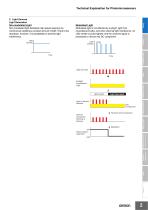
Technical Explanation for Photomicrosensors 2. Light Sources Light Generation Non-modulated Light Non-modulated light facilitates high-speed response by continuously radiating a constant amount of light. There is the drawback, however, of susceptibility to external light interference. Modulated Light Modulated light is not affected by sunlight, light from incandescent bulbs, and other external light interference. An LED emitter is pulse-lighted, and the received signal is processed to remove the DC component. Light intensity Safety Components Light intensity Light from LED Relays Light...
カタログの2ページ目を開く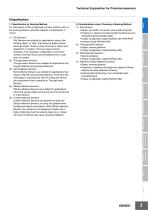
Technical Explanation for Photomicrosensors Classification 2. Considerations when Choosing a Sensing Method (1) Slot Sensors • Shape, slot width, connection (pre-wired/connector) • Presence or absence of external light interference (nonmodulated light/modulated light) • Output configuration (Light-ON/Dark-ON, NPN/PNP) • Indicator (Light-ON/Dark-ON) (2) Through-beam Sensors • Shape, sensing distance • Output configuration (Light-ON/Dark-ON) (3) Retroreflective Sensors • Sensing distance • Output configuration (Light-ON/Dark-ON) (4) Diffusive/Limited-reflective Sensors • Shape, sensing...
カタログの3ページ目を開く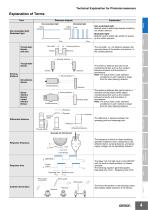
Technical Explanation for Photomicrosensors Explanation of Terms Term Reference diagram Non-modulated light Modulated light Explanation Modulated light Light intensity Light intensity Modulated light: Method used to detect light emitted in pulses by the emitter element. 0 Time Slot width Time Sensing distance The slot width, i.e., the distance between the opposing faces of the emitter and receiver, is the sensing distance. Safety Components Through-beam Sensors (with slot) Non-modulated light: Method used to detect light steadily emitted by the emitter element. Non-modulated light Sensing...
カタログの4ページ目を開く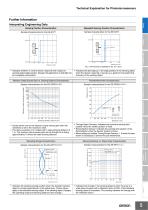
Technical Explanation for Photomicrosensors Further Information Sensing Position Characteristics Interpreting Engineering Data Repeated Sensing Position Characteristics Sample characteristics for the EE-SX77 Safety Components Parallel Movement Characteristics Sample characteristics for the EE-SPW311/411 Distance Y (mm) Control Components Receiver Output Excess Gain vs. Sensing Distance Characteristics Automation Systems Receiver output excess gain (multiple) • Indicates the discrepancy in the edge position of the sensing object when the Sensor responds. It serves as a guide for the...
カタログの5ページ目を開くOMRON/オムロンのすべてのカタログと技術パンフレット
-
D4F
8 ページ
-
D4GS-N
11 ページ
-
E4E2
5 ページ
-
Fiber Unit E32-LT/LD
4 ページ
-
G9SE Series
20 ページ
-
NX-SL/SI/SO
20 ページ
-
G9SP
28 ページ
-
G9SX-SM
24 ページ
-
G9SX-SM/LM
9 ページ
-
G9SX/G9SX-GS
49 ページ
-
G9SX-LM
28 ページ
-
G9SB
10 ページ
-
G9SA
16 ページ
-
DST1 Series
5 ページ
-
WS02-CFSC1-E
3 ページ
-
G9SA-300-SC
9 ページ
-
K8AK-AS
12 ページ
-
K8AK-AW
16 ページ
-
K8AK-VS
12 ページ
-
K8AK-VW
12 ページ
-
K8AK-PH
12 ページ
-
K8DS-PH
12 ページ
-
K8AK-PM
16 ページ
-
K8DS-PM
12 ページ
-
K8AK-PA
12 ページ
-
K8DS-PA
12 ページ
-
K8AK-PW
12 ページ
-
K8DS-PU
12 ページ
-
K8DS-PZ
12 ページ
-
K8AK-TS/PT
12 ページ
-
K8AK-LS
12 ページ
-
K8AK-TH
12 ページ
-
K2CM
16 ページ
-
SE
15 ページ
-
SAO
13 ページ
-
APR-S
6 ページ
-
XS5
25 ページ
-
XS2
29 ページ
-
F92A
4 ページ
-
GLS
3 ページ
-
TL-L
5 ページ
-
V680 series
68 ページ
-
V680S Series
68 ページ
-
MY
35 ページ
-
E3NC-L/-S
16 ページ
-
61F-GPN-BT / -BC
5 ページ
-
NE1A-SCPU Series
8 ページ
-
NE1A-SCPU0[]-EIP
8 ページ
-
NE0A-SCPU01
6 ページ
-
LY
14 ページ
-
G2R-[]-S
11 ページ
-
G7T
7 ページ
-
G2A
9 ページ
-
G2A-434
7 ページ
-
G2AK
7 ページ
-
MK-S
9 ページ
-
MK-S(X)
12 ページ
-
MM
17 ページ
-
MMK
14 ページ
-
G4Q
6 ページ
-
G7Z
9 ページ
-
G7J
10 ページ
-
E4B
12 ページ
-
E4A-3K
9 ページ
-
E4C-UDA
5 ページ
-
E6H-C
5 ページ
-
E6F-C
5 ページ
-
E6D-C
5 ページ
-
E6B2-C
5 ページ
-
E6A2-C
5 ページ
-
NL
8 ページ
-
VB
5 ページ
-
SC
5 ページ
-
D5F
5 ページ
-
D5A
8 ページ
-
E3S-GS3E4
3 ページ
-
E3S-R
11 ページ
-
E3S-A
21 ページ
-
E3S-CL
9 ページ
-
E3ZM-C
14 ページ
-
E3T Data Sheet
26 ページ
-
E3T Series
6 ページ
-
G5 Series
59 ページ
-
Sysmac Catalog
410 ページ
-
VT-X700
6 ページ
-
E5AC-T
8 ページ
-
CP1
12 ページ
-
CP1E
12 ページ
-
MS4800
40 ページ
-
VC-DL100
6 ページ
-
FZ4 Series
42 ページ
-
ZG2
16 ページ
-
ZS Series
32 ページ
-
ZW Series
24 ページ
-
E9NC-T
2 ページ
-
Vision System FH series
54 ページ
-
CompoNet
28 ページ
-
Code Reader/OCR
24 ページ
-
NT series
18 ページ
-
Safety Controller G9SP
28 ページ
-
Data Logger ZR-RX Series
12 ページ
-
DeviceNet Safety System
30 ページ
-
Switching Power Supplies
16 ページ
-
Photomicro Sensors
7 ページ
-
Displacement Sensors
4 ページ
-
H8PS Cam Positioner
32 ページ
-
FQ Vision Sensor
17 ページ
-
E2EF
8 ページ
-
FQ2 Smart camera
24 ページ
カタログアーカイブ
-
SMART REMOTE I/O
12 ページ
-
Sensor Accessories
38 ページ
-
REGULATION SOLUTIONS
24 ページ
-
Vision Systems
20 ページ

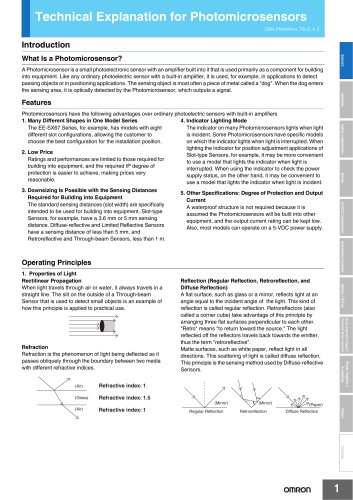


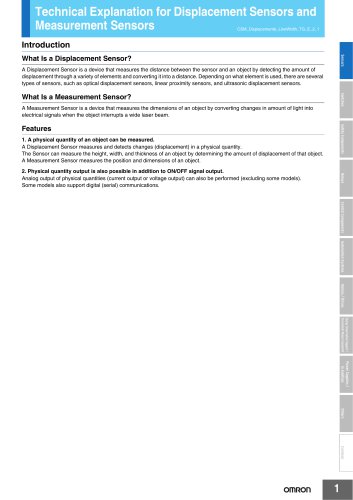
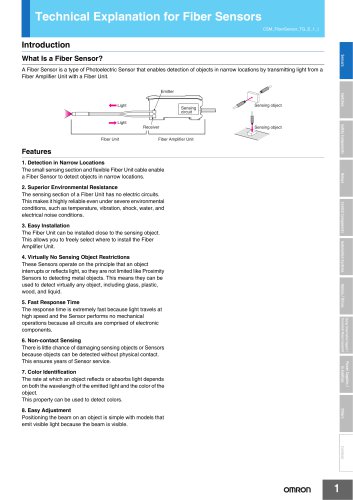



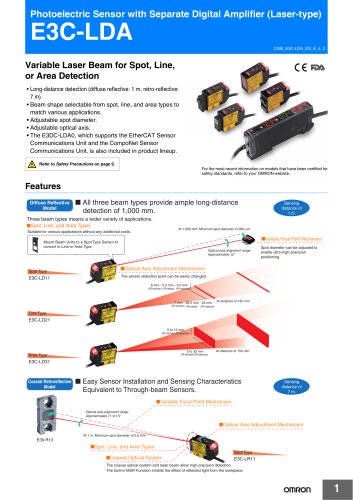








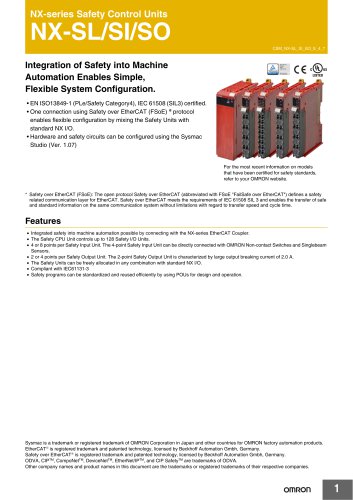










































![NE1A-SCPU0[]-EIP](https://img.directindustry.com/pdf/repository_di/15954/ne1a-scpu0-eip-616667_1mg.jpg)


![G2R-[]-S](https://img.directindustry.com/pdf/repository_di/15954/g2r-s-616653_1mg.jpg)






































































